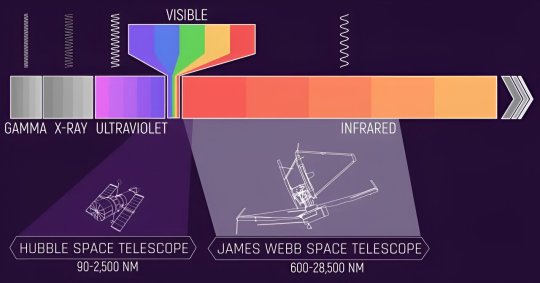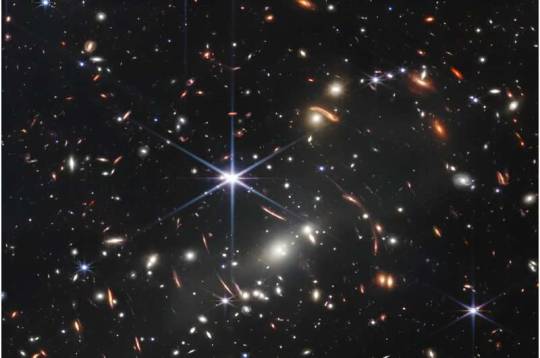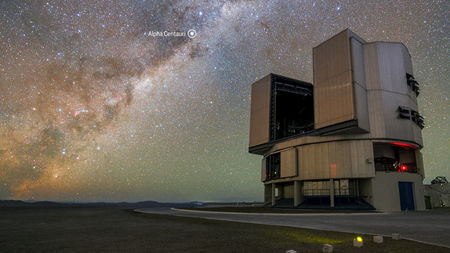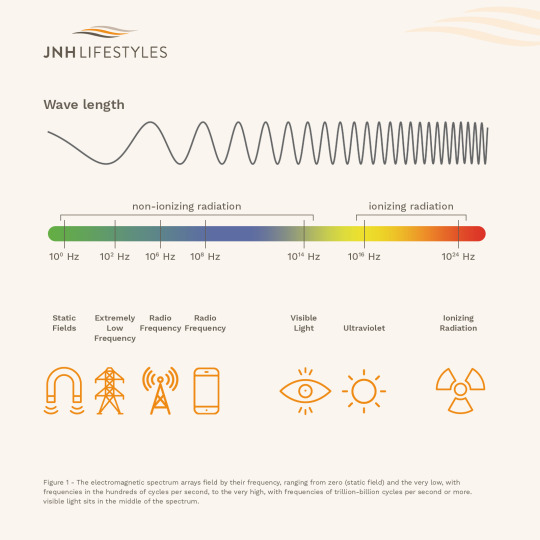#midinfrared
Text
We offer the option to upgrade to full spectrum at your convenience. Give us call: (800) 528-3110 and let us know which JNH Sauna you have.
#infraredsauna #irsauna #homesauna #indoorsauna #fullspectrum #simplesauna #2personsauna #diysauna #farinfrared #midinfrared #NearInfrared
#infraredsauna#irsauna#homesauna#indoorsauna#fullspectrum#simplesauna#2personsauna#diysauna#farinfrared#midinfrared#NearInfrared
0 notes
Text

Discovery of unexpected ultramassive galaxies may not rewrite cosmology, but still leaves questions
Ever since the James Webb Space Telescope (JWST) captured its first glimpse of the early universe, astronomers have been surprised by the presence of what appear to be more "ultramassive" galaxies than expected. Based on the most widely accepted cosmological model, they should not have been able to evolve until much later in the history of the universe, spurring claims that the model needs to be changed.
This would upend decades of established science.
"The development of objects in the universe is hierarchical. You start small and get bigger and bigger," said Julian Muñoz, an assistant professor of astronomy at The University of Texas at Austin and co-author of a recent paper published in Physical Review Letters that tests changes to the cosmological model. The study concludes that revising the standard cosmological model is not necessary. However, astronomers may have to revisit what they understand about how the first galaxies formed and evolved.
Cosmology studies the origin, evolution and structure of our universe, from the Big Bang to the present day. The most widely accepted model of cosmology is called the Lambda Cold Dark Matter (ΛCDM) model or the "standard cosmological model." Although the model is very well-informed, much about the early universe has remained theoretical because astronomers could not observe it completely, if at all.
Launched in 1990, the Hubble Space Telescope was pivotal in developing and refining the standard cosmological model. It observes the universe in ultraviolet, visible and some near-infrared wavelengths of light. However, this makes it better at seeing some things than others. For example, Hubble is well equipped to view smaller galaxies that often contain higher populations of young, ultraviolet-emitting stars and less dust that tends to absorb shorter wavelengths.
Launched in late 2021, JWST provides an important complement to Hubble's capabilities. By observing in the near- and midinfrared wavelengths, JWST can detect objects that are invisible to Hubble.
"We're opening a window to the unknown," Muñoz said. "We are now able to test our theories about the universe where we haven't been able to before."
Shortly after the Big Bang, things weren't perfectly uniform. Tiny variations in density had a momentous impact on the future structure and evolution of the universe. Regions with greater density attracted more matter due to gravity, eventually leading to the formation of bigger and bigger structures.
To become so big so quickly, the ultramassive galaxies observed by JWST would in theory be possible only if more of these higher-density regions had developed right after the Big Bang. This would require changing the standard cosmological model.
Muñoz and his team tested this hypothesis.
They picked a range of cosmic time for which both JWST and Hubble observations are available. Within this range, they identified the most massive galaxies available in the JWST data and calculated the amount of change to the early density of the universe that would be needed for them to form.
They also calculated how many smaller galaxies would result from this hypothetical change. These additional smaller galaxies would have been observed by Hubble.
"But that's not what we see," explained Muñoz. "You cannot change cosmology enough to explain this abundance problem, given that Hubble's observations would also be affected."
So why is JWST finding so many ultramassive galaxies? One possibility is that they contain supermassive black holes. These black holes would heat up nearby gas, making the galaxies appear brighter and therefore more massive than they really are. Or the galaxies may not actually be in the early universe at all, but they look like they are because dust is causing their color to look redder than it would otherwise. This shift would make the galaxies appear farther away than they are.
In addition to Muñoz, study authors are Nashwan Sabti and Marc Kamionkowski of Johns Hopkins University.
TOP IMAGE....By observing different parts of the electromagnetic spectrum, the Hubble Space Telescope and James Webb Space Telescope are able to see different things in the same parts of the universe. Credit: NASA, J. Olmsted (STScI).
LOWER IMAGE....Infrared view of the universe captured by the James Webb Space Telescope. Credit: NASA, ESA, CSA and STScI.

1 note
·
View note
Text
#ad #barrelsauna #barrelsaunas #2personbarrelsauna #cedarbarrelsauna #saunas #homesaunas #saunabarrel #barrelsaunasforhome #2personcedarsauna #cedarsaunawood #infraredcedarsauna #infraredsaunablanket #redcedarsauna #bestoutdoorsauna #sauna #painrelief #performance #athleterecovery #nearinfrared #sweat #midinfrared
#farinfrared #stressrelief #saunatime #saunalife #wellness #spa #infraredsauna #saunalove #fitness #relax #detox
0 notes
Text
Gate-tunable negative refraction of mid-infrared polaritons | Science#Gatetunable #negative #refraction #midinfrared #polaritons #Science
Gate tunable nanoscale negative refraction of polaritons is demonstrated at the interface of 2D materials.
#Gatetunable #negative #refraction #midinfrared #polaritons #Science

View On WordPress
0 notes
Text
First chip-scale broadband optical system that can sense molecules in mid-infrared range
First chip-scale broadband optical system that can sense molecules in mid-infrared range
[ad_1]
Researchers have demonstrated, for the first time, a chip-based dual-comb spectrometer in the mid-infrared range, that requires no moving parts and can acquire spectra in less than 2 microseconds. The system, which consists of two mutually coherent, low-noise, microresonator-based frequency combs spanning 2600 nm to 4100 nm, could lead to the development of a spectroscopy lab-on-a-chip for…
View On WordPress
#BROADBAND#chipscale#midinfrared#molecules#Nanotechnology; Spintronics; Electronics; Technology; Spintronics Research; Computer Science; Computer Modeling; Distributed Computing#optical#range#sense#system
0 notes
Text
Biochemical Quantitative Phase Imaging Delivers Unprecedented 3D Images of Live Cells Plus Details of Molecules Inside
Biochemical Quantitative Phase Imaging Delivers Unprecedented 3D Images of Live Cells Plus Details of Molecules Inside
[ad_1]
An artistic representation of the new imaging method called biochemical quantitative phase imaging with midinfrared photothermal effect, developed by a research team at the University of Tokyo. Credit: s-graphics.co.jp
No damage caused by strong light, no artificial dyes or fluorescent tags needed.
The insides of living cells can be seen in their natural state in greater detail than…
View On WordPress
0 notes
Text
Facebook post (2019-11-13T01:49:25.000Z)
From article, (At the meeting, Therrien dramatized the magnetism by showing a video of millimeter-size flakes of the substance suspended in a water droplet. As he slowly waved a small bar magnet over the water, the flakes followed it back and forth. More tantalizing still is his claim that the material remains magnetic even at the elevated temperatures at which motors and computers typically operate. The magnetism adds to a suite of properties never before seen together in a form of pure carbon. They include tremendous hardness that presumably results from the bonds joining adjacent layers: “We’ve tried scratching it with steel wool, and it comes off clean,” Therrien says. “The only thing we can say verifiably scratches it is a diamond scribe.” Though the group has yet to measure the tensile strength of the material, the fact that vanishingly thin flakes hold together at millimeter size suggest it may be as strong as some metals, he says. Then there is the mirrorlike appearance, seen in photos Therrien showed at the meeting. The team’s measurements indicate that the film, even when just 50 nanometers thick, reflects more than 90% of incoming light at wavelengths ranging from the far-ultraviolet to the midinfrared. That attribute could make it a useful reflective coating, more durable than the standard aluminum, for mirrors in cameras and telescopes. Its electrical conductivity turned out to be just shy of that of stainless steel. But it can also display other electronic properties. Annealing the material by slowly heating it to 1000°C dims its shine and turns it into a semiconductor with a band gap—the energy required to liberate an electron—similar to that of amorphous silicon, which can turn light into electricity. That makes it a candidate material for photovoltaic cells, Therrien suggests.)
0 notes
Photo

New Post has been published on https://usviraltrends.com/what-is-alpha-centauri-hiding-searches-for-earth-like-planets-ramp-up-around-our-nearest-stellar-neighbor-science/
What is Alpha Centauri hiding? Searches for Earth-like planets ramp up around our nearest stellar neighbor | Science
The Very Large Telescope in Chile will target Alpha Centauri, which glows brightly in the southern sky.
Y. BELETSKY (LCO)/ESO
By Daniel CleryApr. 11, 2018 , 12:30 PM
Alpha Centauri, a three-star system just 4 light-years away that is the sun’s nearest neighbor, ought to be a great place to look for Earth-like planets. But last week, at a meeting of the European Astronomical Society (EAS) here, astronomers lamented the way the system has thwarted discovery efforts so far—and announced new efforts to probe it. “It’s very likely that there are planets,” says Pierre Kervella of the Paris Observatory in Meudon, France, but the nature and positions of the stars complicate the search. “It’s a little frustrating for planet searchers.”
The system’s two sunlike stars, Alpha Centauri A and B, orbit each other closely while Proxima Centauri, a tempestuous red dwarf, hangs onto the system tenuously in a much more distant orbit. In 2016, astronomers discovered an Earth-mass planet around Proxima Centauri, but the planet, blasted by radiation and fierce stellar winds, seems unlikely to be habitable. Astrobiologists think the other two stars are more likely to host temperate, Earth-like planets.
Maksym Lisogorskyi, an astronomer at the University of Hertfordshire in Hatfield, U.K., tried to find them with an instrument on the European Southern Observatory’s (ESO’s) 3.6-meter telescope in Chile. He and his colleagues looked for Doppler shifts in the spectral lines of the stars’ light that would be caused if a planet tugged them back and forth. But Lisogorskyi told the meeting that the stars’ surfaces are turbulent, and prone to flares that also jiggle the spectral lines, masking the subtle signals from any Earth-size planets. “The lines do all kinds of things,” he says. Although Alpha Centauri has been a primary target for the planet-finding instrument since it was inaugurated in 2005, it has seen nothing so far.
Also hampering observations are the current positions of the two stars. As viewed from Earth, they are very close together, making them harder to study individually, Lily Zhao of Yale University told the meeting. More precise observations should become possible as their 80-year orbit carries them farther apart. In the meantime, Zhao and her colleagues have succeeded in ruling out the presence of giant planets around either star, based on a decade’s worth of data from three instruments on different telescopes. “There are no Jupiters in the system, but there may be plenty of Earth-sized planets still to discover,” she said.
In a binary system like Alpha Centauri the lack of giant planets in Jupiter-like orbits is no surprise, because the gravity of each star would tend to kick any such planets orbiting the other star out of the system, Kervella says. But he says that temperate planets in the habitable zone, closer in, would be immune to these perturbations. A chance to get a close look is coming soon: Kervella’s team mapped out the system’s trajectory and found that in a decade, Alpha Centauri A will pass in front of a more distant star and act as a gravitational lens, distorting the light of the star behind it. How the light from the distant star flickers and mutates over time will provide a wealth of information about any inner planets. By that time, ESO’s 39-meter Extremely Large Telescope is expected to be operating and capable of observing the distortion in detail. “We will see all the planets, big and small,” says astronomer Hans-Ulrich Käufl of ESO in Garching, Germany.
The privately funded Breakthrough Initiatives wants an even closer look. In 2016, the organization announced its Starshot program, a $100 million effort to equip a microchip-size spacecraft with a camera and light-sails. A blast of photons from a giant ground-based laser would accelerate the craft to 20% of the speed of light, allowing it to make the 4-light-year trip in 20 years. During a flyby that might last only seconds, it would snap close-ups of the Alpha Centauri planets—assuming they exist.
Finding targets for the Starshot is one aim of a Breakthrough-funded effort that ESO announced last year: adapting an existing instrument on the Very Large Telescope in Chile to directly image possible planets. Called VISIR, the instrument will be equipped with a coronagraph—a mask to block out the light of the star so that the much fainter planets can be seen. VISIR observes in the midinfrared, an advantage for imaging a temperate planet because the disparity in brightness between the dim planet and its brilliant parent star is smaller in this part of the spectrum. The ESO team is testing the hardware and hopes to start observing in mid-2019 with 100 hours of dedicated telescope time.
Others at the EAS meeting think the fastest and cheapest way to detect an Earth-like planet around either of the sunlike stars is with a space telescope. A privately backed organization called Project Blue is seeking $70 million to build and launch a 50-centimeter telescope that would stare at Alpha Centauri. Last year, the project raised $150,000 through crowdfunding to design the spacecraft. Franck Marchis, an astronomer at the SETI Institute in Mountain View, California, a partner with Project Blue, says such a telescope, outfitted with a coronagraph, would be able to obtain an image. “It’s doable. The technology is there,” Marchis said. “The goal is to image a pale blue dot.”
0 notes
Text

0 notes
Photo

#Heatlamp therapy = #redlight #nearinfrared #midinfrared and #farinfrared Get an at home sauna that doubles as a #hotyogastudio. The #saunafix system makes you feel great! #socialdistancing with #exerciseathome https://creatrixsolutions.com/sauna-fix-near-infrared-saunas/ (at Creatrix Solutions LLC) https://www.instagram.com/p/CCFQD5FBawf/?igshid=w7gb2b6uhlwz
#heatlamp#redlight#nearinfrared#midinfrared#farinfrared#hotyogastudio#saunafix#socialdistancing#exerciseathome
0 notes
Text

When installing your sauna, place a drop cloth down to prevent scuffing and shoe prints. When using the sauna, place a towel on the bench and the floor to avoid sweat stains and potential warping due to sweat. Assembly of your JNH Sauna takes about 2 hours.
Protect your floor; Protect your investment!
#infraredsauna#4personsauna#irsauna#homesauna#indoorsauna#fullspectrum#farinfrared#midinfrared#nearinfrared
0 notes
Text

Our Tosi™ collection features ultra-low EMF heaters equipped with mid & far infrared waves, while advanced LEDs provide near infrared. The full spectrum of infrared, giving you the maximum benefit of all wavelengths.
Hello Tosi™, Goodbye Toxins.
#infraredsauna#irsauna#homesauna#indoorsauna#fullspectrum#simplesauna#1personsauna#diysauna#farinfrared#midinfrared#nearinfrared
0 notes
Text

JNH Lifestyles' Ensi™ collection was the pioneer ultra-low EMF saunas with an average 0.32 mG reading, and initially developed to accommodate pacemaker patients.
Ensi™, with Everyone in Mind.
0 notes
Text

JNH Lifestyles infrared saunas use carbon fiber heater panels that emit far infrared waves (FIR). FIR does not transfer its heat until it encounters a surface, such as your body. Once contact is made, FIR can penetrate up to 38mm below the skin and into the muscles.
#infaredsauna101#nearinfrared#farinfrared#midinfrared#infraredtherapy#infraredtechnology#fullspectrum#healthbenefits
0 notes
Text

0 notes
Text

A growing body of evidence from observational, clinical, and mechanistic studies suggests that sauna use is associated with many health benefits and may offer a means to forestall the effects of aging.
#personalsauna#infraredsauna#irsauna#homesauna#indoorsauna#fullspectrum#infraredtherapy#farinfrared#midinfrared#nearinfrared#saunabenefits#unfraredheat
0 notes